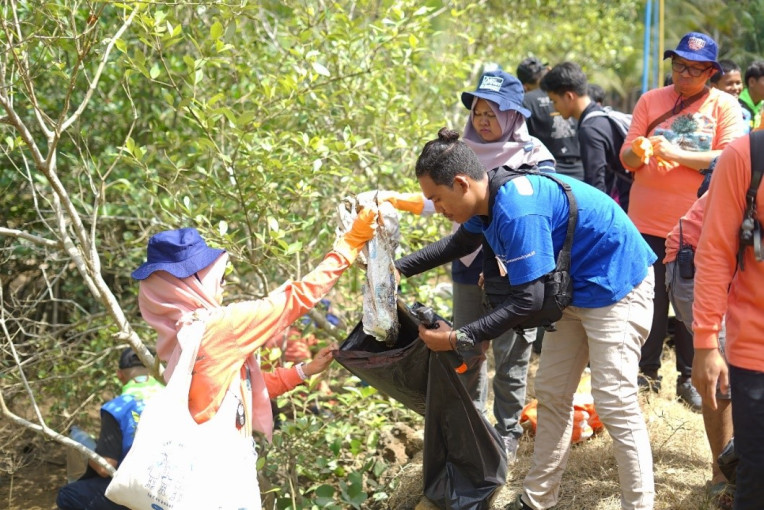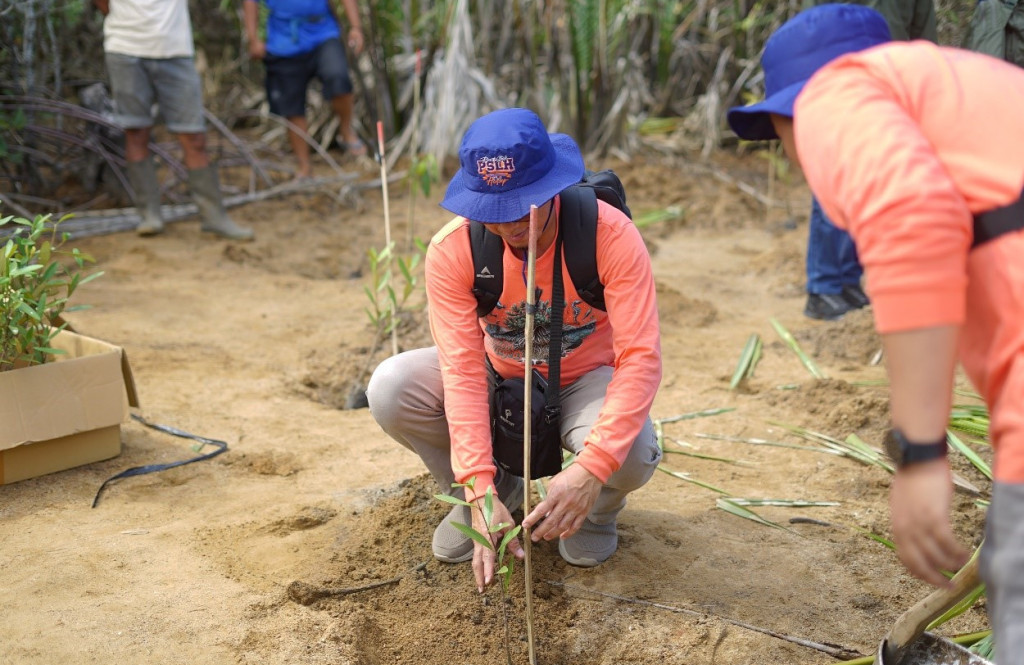
In commemoration of World Ozone Day, which falls on Sep. 16, the Center for Environmental Studies (PSLH UGM) held a two-day community service event on Sep. 13-14, 2024.
This event was held in Pancer Hamlet, Sumberagung Village, Pesanggaran District, Banyuwangi Regency.
The community service event was themed “Accelerating Knowledge and Climate Action for Sustainable Blue Carbon as an Effort to Mitigate the Climate Crisis in Banyuwangi Regency,” in line with the broader theme of World Ozone Day, “Montreal Protocol: Advancing Climate Action.”
The Head of PSLH UGM, Professor Djati Mardiatno, explained to reporters on Friday (Sep. 27) that the collective movement to plant mangroves is a crucial step toward environmental sustainability.
PSLH UGM emphasizes climate action by providing as many carbon capture and storage agents as possible, which can be achieved through mangrove planting.
“We want to address climate change. Mangrove ecosystems, particularly in Indonesia, can absorb up to 52.85 tons of carbon dioxide (CO2) per hectare per year,” Professor Mardiatno stated.
He also highlighted that mangrove ecosystems contribute to human life and serve as important ecosystems for disaster mitigation, particularly in the event of a tsunami.
“Considering that this area experienced a tsunami in 1994, disaster mitigation efforts are necessary to reduce risks if a similar event occurs in the future,” he added.
Professor Mardiatno mentioned that the entire community service team from PSLH UGM arrived in Pancer Hamlet, where over 100 mangrove seedlings, consisting of Avicennia sp., Bruguiera sp., and Rhizophora sp., were prepared.
All participants were briefed by Hendro Supeno, a mangrove activist from KTH Makmur Teluk Pang Pang, on the planting and care of mangroves after planting.
The mangrove planting activity proceeded smoothly, with more than 150 participants, including PSLH UGM staff, Emvitrust, nature-loving students, and the local community of Pancer Hamlet.

After planting the mangroves, the event continued with a trash cleanup in the estuary and surrounding residential areas of Pancer Hamlet. Prior to collecting trash, Hartono, from the Waste Management Center (SEKOLA Emvitrust), explained the process of collecting and sorting trash.
“Valuable trash is collected in orange trash bags, recyclable waste in blue trash bags, and residual waste in black trash bags,” he explained.
After the explanation, all participants and volunteers moved toward the estuary and walked toward Cemara Beach, passing through residential areas.
While collecting trash, participants encouraged local residents to join the cleanup, which aimed to raise community awareness about environmental cleanliness.
280 kg of trash, 63 kg of recyclable and valuable trash, and 217 kg of residual waste were collected through the cleanup effort.
The collected trash was then taken to the Waste Management Center for further processing to reduce the amount of residual waste sent to landfills or discarded into the surrounding environment.
PSLH UGM organized mangrove planting, trash cleanup, and a seminar to raise awareness. It also established formal collaborations with the local community, forest farming groups, and Emvitrust to monitor the planted mangrove seedlings.
The seedlings will be monitored three times over six months to ensure they grow well.
“Any damaged or washed-away mangroves will be replanted, ensuring the consistency and success of the mangrove planting efforts in the future,” Professor Mardiatno said.
Author: Lintang
Editor: Gusti Grehenson
Post-editor: Afif

